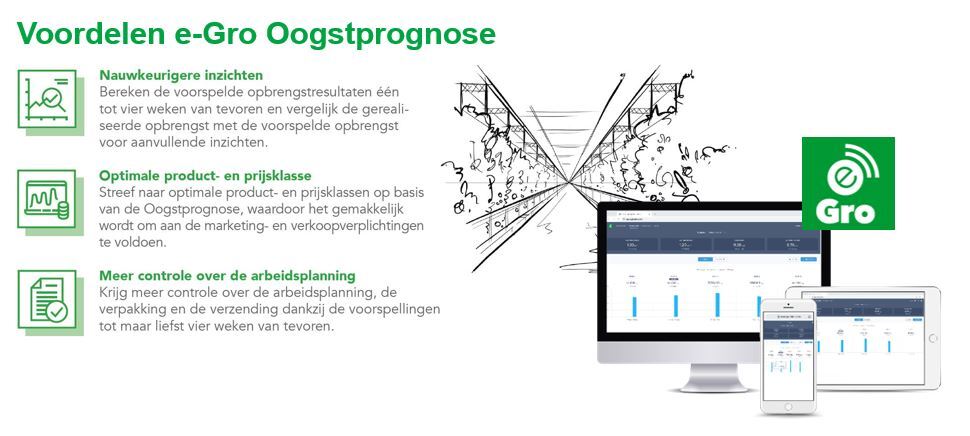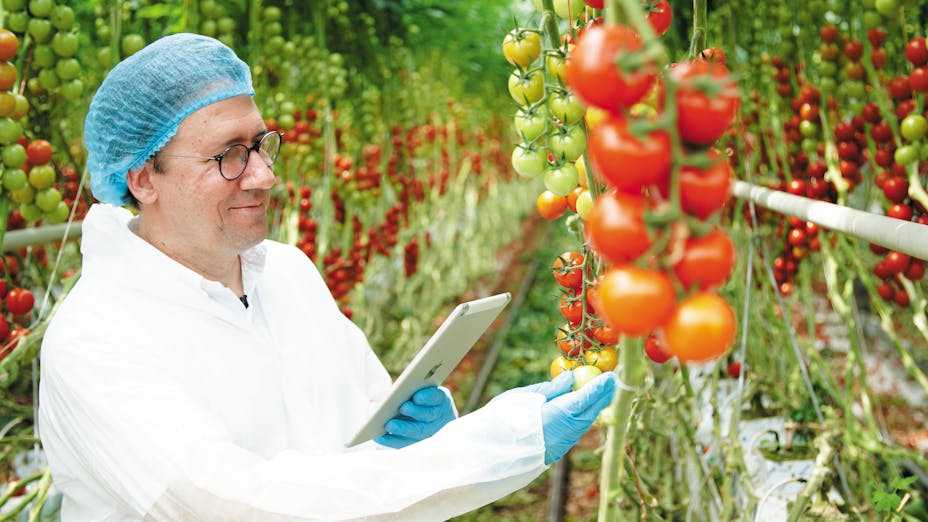One of the biggest challenges in the greenhouse is making the right cultivation decisions at the right time. This is not always easy, as conditions in a greenhouse are constantly changing. Wind, sunlight and CO2 etc., have a huge influence on plant growth and therefore on the quality of the harvest. Due to the constant changes in and around the greenhouse, making the right harvest forecast is challenging and time-consuming while crucial for labour planning and price calculations for sales. This is a shame, because with the amount of data available, it should be possible to quickly understand the status of harvest -or crop growth. Combining the huge amount of data available in the greenhouse, is complex and time-consuming. Therefore, combining data and plant science is more relevant than ever. Data science and AI technologies offer tremendous opportunities to extract and collect data in the greenhouse to increase efficiency, quality and yield.
How do you combine plant and data science?
Because this is still quite new, there are many uncertainties about combining plant science with data science and using new technologies in the greenhouse. Everyone cultivates differently, so specific information and cultivation conditions must always be considered. Each greenhouse is unique, for example in terms of location, type of greenhouse, lighting, growing medium, etc. These factors all affect growth and yield. It is therefore essential to work with personalised data models and the right program. Grodan has developed a data platform 'e-Gro', which analyses the specific, personalised forecasts and data from a greenhouse in real-time.
Impact of data
There is no denying that data and AI can be very useful for a business, as smart algorithms can effectively demonstrate connections and data technology can be used to record historical data. However, the right combination of plant science and data science needs to be sought. The grower's expertise (knowledge regarding the Crop or 'green thumb') must be taken into account. The predictions, suggestions and recommendations only act as data-driven support. For this, we use the metaphor of the pilot. The vast majority of the pilot's work in the plane is done by a computer. However, the pilot still has to make the decisions, and they have to be informed decisions. Even the most successful growers can benefit from data-driven insights, data and forecasts from time to time. We are increasingly seeing different types of greenhouse growers applying data science to optimise their growing strategies.

Getting to work with AI
Grodan helps growers worldwide to aggregate relevant greenhouse data and turn it into real-time insights for data-driven precision growing with its software platform: e-Gro. Recently, the new e-Gro Harvest Forecast module was added and many users use it to map how many kilos of crop are expected in the coming weeks. This module is driven by Artificial Intelligence (AI), which is tailored to the grower's unique situation. e-Gro's Harvest Forecast makes an accurate harvest prediction based on historical data in the program. With its smart algorithms, the program calculates a harvest forecast for the next four weeks. With these smart insights, a grower can anticipate in time by making new (cultivation) decisions in the greenhouse. Read more about how an e-Gro user experiences working with the e-Gro harvest forecast model via this link.

Where the magic happens: the potential of data-driven decision-making
Cultivation, analysis and automation based on digital data are the Future for the greenhouse horticulture sector. Artificial intelligence (AI) and data science are going to deliver breakthrough efficiencies and higher yields. But what exactly do these technologies entail? How do they work? And how can growers actually benefit from them?





